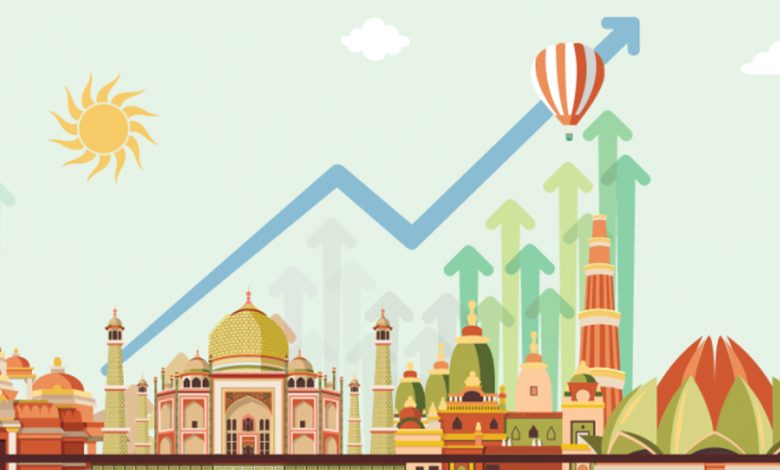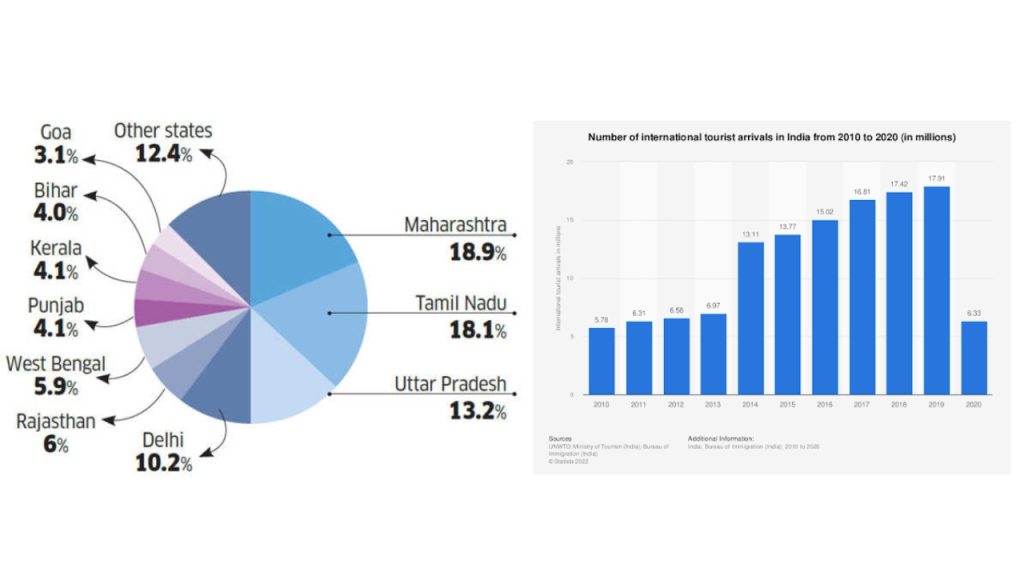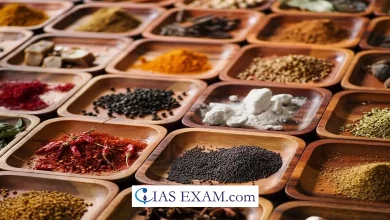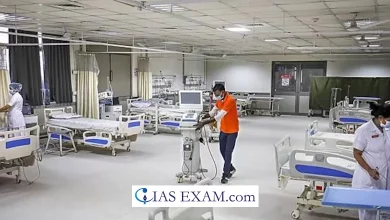India’s Tourism Sector – Issues and Challenges
[GS Paper 3 - Government Budgeting, Growth & Development]

Context – India’s travel and tourism sector is one of the fastest-emerging tourist destinations in the world, and it is poised to be the key axis of development in the coming years. Budget 2023, which marks the beginning of Amrit Kaal, the period of intense robust growth, has outlined the path to developing tourism in mission mode.
About Tourism
- Tourism is a major engine of economic growth in most parts of the world. Several countries have transformed their economies using the tourism potential to the fullest. Tourism has great capacity to create large scale employment of diverse kinds – from the most specialized to the unskilled and all of us know that generation of massive productive employment opportunities is what India needs the most.
- Tourism is constitutionally a state subject, and the central tourism department has been advocating for it to be moved to the Concurrent List to allow policy-making at both the central and state levels. Granting tourism infrastructure status will provide further impetus to the growth of the sector. The government is also considering the establishment of a National Tourism Board.
Vision to Develop 50 Destinations
- G20 provided Economic Boost: India’s presidency of the G20 and Prime Minister’s vision to develop 50 tourist destinations across the country have provided a significant boost to the tourism sector.
- Global ranking: This initiative is expected to improve India’s global ranking on the World Economic Forum’s Travel & Tourism Development Index.
- Employment opportunities: The development of these destinations will create more employment opportunities and contribute to the overall GDP growth of the country.
Growth of Tourism in India
- There has been significant progress in the travel, tourism and hospitality sector in the last decade but there is much further room for improvement.
- India moved up 12 places from 52nd to 40th in the World Economic Forum’s Travel and Tourism Competitiveness Index.
- Foreign tourist arrivals have increased from 5.1 million in 2009 to 8.8 million in 2016; yet they account for less than 1% of global tourist arrivals.
- With 35 world heritage sites, 10 bio-geographical zones and 26 biotic provinces, India has significant potential to increase the number of tourist arrivals.
- As a highly labor-intensive sector, tourism has the capacity to generate large-scale, good quality employment.
- It accounted for 25 million direct and more than 14 million indirect jobs. Direct jobs in the sector made up 5.8% of India’s total employment. Together, direct and indirect jobs accounted for 9.3% of total employment.
- The sector has multiple forward and backward linkages with further job generating potential in sectors such as agriculture, retail, transport and financial services.

Central Govt. Push on Tourism
- Various policies and initiatives: The central government is committed to supporting the travel and tourism sector by implementing various policies and initiatives.
- Six themes for the development in the Union budget: The Union budget has identified six themes for the development of the sector, including convergence, public-private participation, creativity, innovation, digitization, and development of destinations.
- Collaboration is essential: Collaboration between the government, private sector, and local communities is essential for the development and promotion of tourism in India. This collaborative approach stimulates creativity, enhances competitiveness, and achieves visionary results.For example: The Prime Minister has cited examples of successful collaborations, such as Kashi, Kedarnath, the Statue of Unity, and Pavagadh, to demonstrate how a unified approach can boost tourism in a region.
Role of Technology in Tourism
- Interdependence: Technology and tourism are becoming increasingly interdependent, and a coordinated approach that adopts technology can boost the tourism sector in India.
- Employing Augmented and virtual reality: Augmented Reality (AR) and Virtual Reality (VR) can provide travelers with virtual tours and simulations of famous landmarks and cultural experiences.
- Artificial intelligence: Artificial Intelligence (AI)-powered chatbots and digital assistants can assist travelers in planning their trips and provide real-time assistance while traveling.
- 6P: Planning, Place, People, Policy, Process, and Promotion. Unlocking India’s tourism potential requires a comprehensive strategy that addresses the six key pillars 6Ps.
- The government’s Budget Session addressed all these 6Ps effectively by covering destination planning and management, infrastructure development, sustainability and safety, development of human capital, policy and process interventions to align the Centre and states as well as promoting the narrative of Indian tourism.
Conclusion
As a travel destination, few other nations can offer the diversity of products and experiences found in India. The travel and tourism industry offers significant opportunity for fulfillment of key national growth imperatives including employment generation across all regions of the country, and growth in the sector can contribute to overall economic development in the country. With the right policies and initiatives in place, it’s the ideal time for India to turbo-charge efforts to be among the top three travel and tourism economies globally.





.png)



